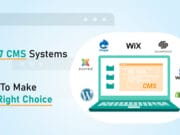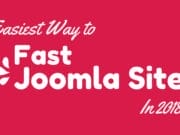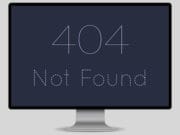Hi there! Welcome back to ‘How to use Joomla” series.
Today you would be reading the final part of the series but it won’t be the end of the subject. Joomla is vast in documentation and versatile in functionality. Hence we would come across soon with new updates or fresh news snippets about Joomla.
In the previous article (Part 2) we have seen and understood how Joomla’s Admin panel works, organizes and helps your online operations. In continuation to that, today we will be going through another important aspect of Joomla i.e. ‘Search Engine Optimization and driving the traffic’.
Once your Joomla website is online with all its plug-ins, modules and components in place, your work has just increased. Now you need to sustain the initial momentum gained and speed up slowly, steadily towards the goal. Ironically, in our physical world ‘traffic’ can jam your vehicle and forces you to apply brakes but in the virtual world it is all the reverse to this. If you do not have enough traffic i.e. streaming of visitors, your web venture is doomed. Yes, just doomed!
So, you need to build ‘heavy traffic’ really all-time-heavy-traffic and to achieve this Himalayan task, you need to take help of several techniques and SEO (Search Engine Optimization) is the pivotal one. For those websites that are developed on other platforms like ASP or HTML, deploying the SEO techniques is painful. You have to literally scratch your head and keypad to insert the ‘keywords’, ‘anchor texts’ etc. as part of the articles and wait for the search engines to crawl the pages.
But Joomla, the savior, makes your life simple and relaxed with its built-in SEO features. Before exploiting the SEO benefits, you should have ‘Authors’ for your website. You can be the author or invite your friends or others to write for you. You can hire Content Writers who can write professional and SEO sensitive articles. As a Super Admin, you can create Author profiles by assigning login name and passwords for the authors. Post the articles through Article Manager and place them under relevant categories (create them with Category Manager).
While posting the article (any article for that matter), ensure that the article contains:
- Keywords and anchor texts (you can get them from Google Keyword Tool) that are relevant to your business.
- Important words/phrases are put in bold, italics and double quotes as these are sensitive in terms of SEO.
- Images are having ALT text i.e. image description and alternative text.
- Make a best use of article’s “Alias” which is right below the article Title.
- Now go the section called “Meta Description” and write meaningful message about the article. Meta Description makes the article to appear in search engine listings when searched with the phrases that you have placed in article’s Meta Description box. So be creative and clever to place right words over here.
- Just below the Meta Description, you can see another text box named as “Meta Keywords”. Here you can put important words by separating each of them with a comma. Put all those relevant words that you wish to associate with that article. Here you need to be insightful to think how visitors can ‘type’ or ‘frame’ the search word/phrase and type exactly in to this box.
- Ensure that in Global Configuration settings, you have set ‘Search Engine Friendly URLs’ to “YES”.
As your links start appearing on the listings and as they climb up the positions, you will get more and more visitors. Increased traffic means rise in your income if you are having ads from ad networks like Google AdSense, Clicksor etc.
You are excited now, right!
Keep up the excitement as we would be exploring other types of websites that can be created by using Joomla and which can earn good money.
1. Build a Job Portal website using Joomla:
You are aware that you have to register a domain name with proper extension before building a website. If you have already done this bit then follow the Joomla installation process as briefly explained in Part 1.
Once you domain is connected to the Joomla template, now you need to download the Plug-in/Component/Module of Joomla that helps you in creating a job portal. There are commercial and non-commercial plug-ins/modules are available in Joomla’s Extensions Directory.
To view them, visit Joomla Extension Directory (JED) and select “Ads & Affiliates” category. Under this, there are number of sub-categories but you need to select “Jobs & Recruitment”. Now, you can see the list of extensions/plug-ins/modules like JobGrok Premium, JoomBri Freelance etc. You can also see the product description, user’s ratings & reviews. You can also see the demos and documentations of each plug-in/module. Read all of them and then chose the plug-in/module and download it on to your local drive.
Login into the Admin panel and select ‘Extension Manager’ from the drop down of Extensions menu. Now select the package that you have downloaded and click on ‘Install & Run’. Your package should get installed successfully. Otherwise, Extension Manager would display the errors in Red color. You can get back to the plug-in creator to get help on those errors.
After successful installation, go to ‘Components’ menu and start customizing the Job portal plug-in that was just installed. Once you are through with customization, you are ready with the Job Portal.
2. Build a News Portal website using Joomla:
If you are planning to create online news portal to publish local news with national and international inputs you can do it easily with Joomla’s plug-ins. The most popular Joomla components are:
- 2J News Slider
- RAXO All-mode PRO
- DisplayNews
- Mini FrontPage
- News Show Pro GK4
3. Build a Video Sharing Website using Joomla:
Videos are the most browsed content on internet. It is estimated that 30% of the overall internet traffic is going to video websites like Youtube. Also, it has been recognized as one of the best revenue generating verticals of online business. So if you have an idea of building a video sharing website, nothing works economically than Joomla.
Being an open source technology (i.e. free software) and providing you with out of the world types of paid and free plug-ins or components, you can build a best video website with less investment and in least possible time spent on the project.
There are plenty of developers who offer free website templates for Joomla users. Google for them and download a good looking theme and integrate the same with your Joomla website. Some of the free templates include the video sharing feature too.
Alternatively, you can visit the Multimedia category of Extensions Directory of Joomla. This category has three sub-categories i.e. (i) Multimedia Display; (ii) Multimedia Players and (iii) Streaming & Broadcasting.
You can choose the most popular components like AllVideos or JPlayer which can add not only a video player to your website but allows creating galleries too. You can set the upload parameters such that the members also can contribute the videos and share them through social media buttons.
4. Build Multilingual Website using Joomla:
Multilingual website can gain popularity across the globe as it can talk to the readers in their own language. In multilingual website, translations happen automatically when a visitor accesses the webpage. If your website is in English then the chances of offering your content in other languages like French, Spanish, and Chinese etc.
To have the multilingual functionality, you need to download one of the several components available in Joomla Extension Directory under “Languages” category. There are certain popular plug-ins like FaLang, Joom!Fish (both are non-commercial) and many commercial ones. Download any one of them that best suits your plans and install the plug-in by using Extension Manager.
That is it. Your multilingual website is ready!
Conclusion:
In this part of the article series about Joomla, we have discussed about the Administration Panel in details, its benefits and its various managers but more importantly about Extension Manager. We have also seen how different websites can be created with the help of Joomla plug-ins/components/modules.
Should you have any doubts, clarifications or inquires post your question here and we will answer all of them. Do not shy away from asking any question, how silly it could be, as it reflects your zeal to know more about Joomla. We would be glad to get back with clarifications asap.
So, that is what we wanted to say in this concluding part of this series.
If you have any suggestions, please send to us!





